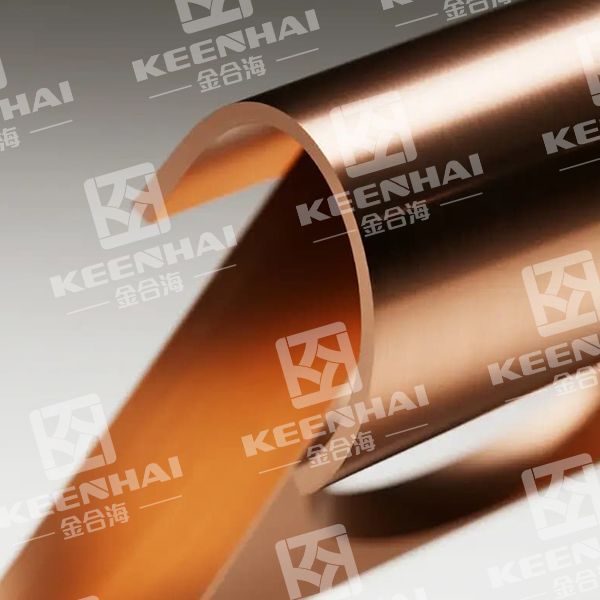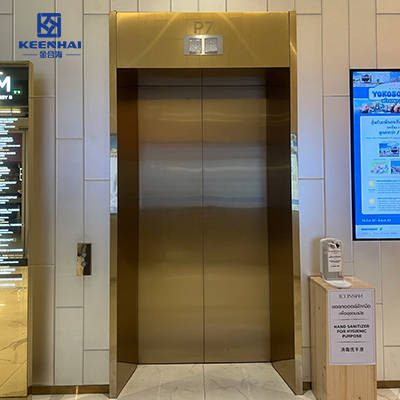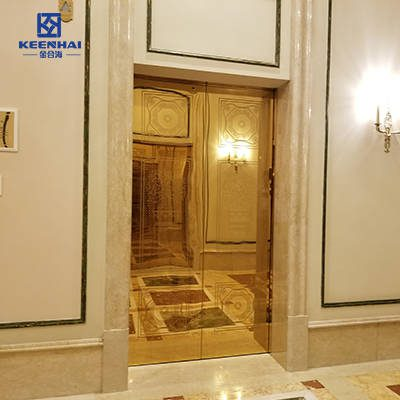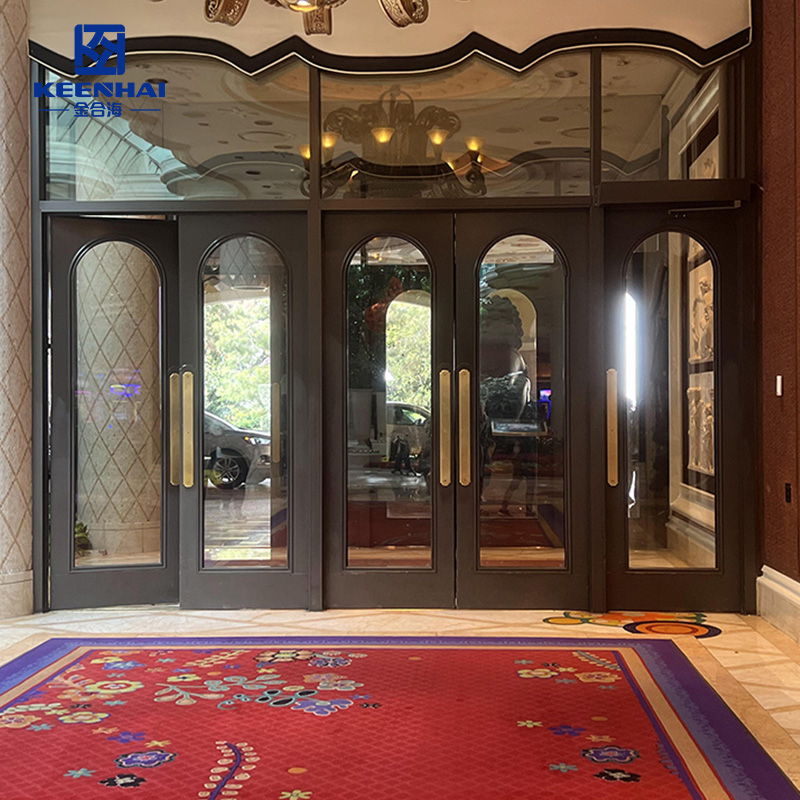PVD coating, or Physical Vapor Deposition, is a vacuum process that bonds metal vapor—like titanium or chromium—onto a substrate. It produces a hard, corrosion-resistant layer with a thickness of 0.25–5 microns and hardness up to 3000 HV. Compared with traditional plating, PVD is cleaner, lasts longer, and maintains color stability under UV and humidity. It’s widely used for stainless steel panels, tools, and architectural hardware.
1.What Is PVD Coating?
1.1Definition and Basic Concept
PVD coating, short for Physical Vapor Deposition, is a vacuum-based technology that deposits a thin, durable metallic film on the surface of materials like stainless steel, aluminum, or titanium. The process enhances both appearance and performance, giving the metal a refined finish with exceptional hardness and corrosion resistance. In modern architecture and interior projects, designers often choose PVD-coated stainless steel products to achieve sleek aesthetics and long-lasting durability without relying on paints or chemicals. You can see them in luxury elevators, hotel lobbies, and building façades where surfaces must stay bright and clean over time.
1.2How PVD (Physical Vapor Deposition) Works
PVD coating is not a chemical treatment — it’s a physical process that occurs in a high-vacuum chamber. Here’s how it typically works:
-
Surface Preparation – The stainless steel sheet is polished and cleaned to remove oil, dust, and oxidation.
-
Heating and Evaporation – The coating material (like titanium nitride or zirconium nitride) is heated until it turns into vapor.
-
Deposition – The vaporized particles bond to the surface at the atomic level, forming a thin yet extremely strong layer.
-
Cooling and Finishing – The coated surface cools and hardens, resulting in a smooth, decorative, and wear-resistant finish.
This process creates a color-rich metallic film that becomes part of the surface instead of just sitting on top of it, which explains why PVD-coated finishes resist scratches and fading even in outdoor conditions.
| Process Stage | Description | Typical Temperature |
|---|---|---|
| Surface Preparation | Polishing, cleaning, degreasing | Room temperature |
| Evaporation | Heating coating material into vapor | 400–600°C |
| Deposition | Vapor condenses and bonds on metal | 400–500°C |
| Cooling | Hardening and stabilization | Ambient |
1.3Common Materials Used in PVD Coating
PVD coating works best on high-grade metals. The most popular base is stainless steel sheet due to its excellent formability and surface consistency. Other materials include titanium and aluminum when specific weight or hardness properties are required. Among architectural applications, PVD finishes are commonly used on stainless steel exterior wall panels for commercial buildings, luxury retail stores, and hotel façades. These coated panels not only look premium but also stand up to rain, UV light, and pollution — offering a perfect blend of beauty and practicality.
In short, PVD coating transforms standard metal into a high-performance surface that resists corrosion, scratches, and wear while maintaining a modern, reflective finish.

2. Key Characteristics of PVD Coating
2.1 Thickness and Surface Structure
PVD coatings are incredibly thin yet remarkably strong. The typical thickness ranges from 0.25 to 5 microns, which is about 50 times thinner than a human hair. Despite being so thin, the coating forms a dense crystalline layer that completely seals the metal surface. The microstructure is smooth, uniform, and free of pinholes — a key reason why PVD-coated stainless steel resists corrosion far better than painted or electroplated surfaces.
During deposition, the substrate temperature and vacuum pressure are carefully controlled between 400°C and 600°C, ensuring that each metal atom bonds tightly to the base layer. This atomic-level bonding gives the surface a mirror-like reflectivity and a hardness level of up to 2,500 HV (Vickers Hardness), outperforming conventional chrome coatings that typically reach only 800–1,000 HV.
| Property | PVD Coating | Electroplating |
|---|---|---|
| Typical Thickness | 0.25–5 μm | 10–20 μm |
| Surface Roughness (Ra) | ≤ 0.02 μm | ≥ 0.15 μm |
| Hardness (Vickers HV) | 2,000–2,500 | 800–1,000 |
| Corrosion Resistance | Excellent | Moderate |
2.2 Adhesion and Durability
One of the defining strengths of PVD coating is its exceptional adhesion. Instead of relying on chemical glue or primer, the vaporized coating atoms bond directly with the base metal through solid-state diffusion. This creates a permanent interface that doesn’t peel, chip, or flake even after years of use.
Independent abrasion tests show that PVD-coated panels can withstand over 1 million wear cycles without significant color change or coating loss. This durability is why luxury buildings and public facilities increasingly choose pvdstainlesssteel’s products for high-traffic environments such as hotel elevators, wall claddings, and escalator panels. The coating also performs exceptionally under harsh weather — resisting UV exposure, humidity, and acid rain — with a lifespan exceeding 20 years under normal conditions.
2.3 Color and Finish Options
PVD technology allows for an impressive spectrum of metallic tones — not painted colors, but actual metallic compounds that refract light differently based on their composition. Popular hues include gold (TiN), rose gold (ZrN), black (CrN), དང bronze (TiCN). Each shade offers a rich depth and natural metallic reflection that traditional plating or powder coating can’t replicate.
Surface finishes can be adjusted from super mirror (Ra ≤ 0.02 μm) to satin, hairline, ཡང་ན vibration texture, depending on the project’s aesthetic goals. For architectural designers, stainless steel sheets with PVD finishes are often combined with stainless steel exterior wall panels to create visual continuity across façades and interiors. The coating not only enhances appearance but maintains consistent color tone across large installations — a critical factor in premium construction and interior applications.
3. Main Advantages of PVD Coating
3.1 Superior Corrosion and Wear Resistance
One of the most defining advantages of PVD coating is its unmatched protection against corrosion and surface wear. Traditional stainless steel begins to show signs of oxidation after prolonged exposure to humidity or salt air, especially in coastal or industrial areas. In contrast, a PVD-coated stainless steel surface maintains its integrity for over 20 years, even in aggressive outdoor environments.
The key lies in its dense, non-porous film structure that prevents oxygen and moisture from reaching the metal substrate. In salt-spray testing exceeding 1,000 hours (ASTM B117), PVD-coated panels showed zero rust formation, while electroplated samples developed visible corrosion within 120 hours. The high surface hardness of 2,000–2,500 HV also means the coating resists micro-abrasion, preventing scratches from cleaning tools or sand particles.
| Test Parameter | PVD-Coated Stainless Steel | Conventional Plating |
|---|---|---|
| Salt Spray Test Duration | > 1,000 hours (no rust) | 120 hours (visible corrosion) |
| Surface Hardness (Vickers HV) | 2,000–2,500 | 800–1,000 |
| Service Life (Outdoor) | 20+ years | 5–8 years |
| Maintenance Frequency | Very Low | Moderate |
This is why many architects and contractors specify PVD stainless steel products for exterior façades, handrails, and elevator claddings in high-humidity zones. They perform like stainless steel but age far more gracefully.
3.2 Enhanced Aesthetic Appeal
PVD coating doesn’t just protect — it transforms the appearance of metal. The process produces deep metallic colors that change subtly under light, giving architecture and interiors a luxurious visual texture. Each finish—whether gold, rose, black, bronze, or champagne—is the result of atomic-level adjustments in gas composition and deposition temperature.
Unlike painted coatings, PVD finishes don’t fade or peel. The color is embedded within the crystal lattice of the coating itself, meaning the surface retains its brilliance after years of cleaning, sunlight, or public contact. Designers favor PVD stainless steel sheets for wall panels, ceiling trims, and decorative columns because of their reflective depth and consistency across large installations.
To maintain design harmony, some projects combine mirror-finish panels with satin or hairline textures, allowing light reflection to shift subtly throughout the day. This layered effect creates visual richness — a reason why luxury hotels, airports, and retail interiors often integrate PVD-finished metals into their core design language.
3.3 Eco-Friendly and Non-Toxic Process
Another major strength of PVD coating is that it’s environmentally clean and non-toxic. The process uses no harmful chemicals, acids, or cyanides, unlike traditional electroplating or painting. Everything happens in a sealed vacuum chamber, meaning zero wastewater and minimal airborne emissions.
Each cycle consumes around 60–70% less energy than conventional thermal coating methods and generates no hazardous sludge. This makes it compliant with global environmental standards such as RoHS, REACH, དང ISO 14001. Because the coating is applied physically rather than chemically, it leaves no residue or chemical smell, making it suitable for indoor applications like kitchen appliances, furniture trim, and elevator interiors.
Many manufacturers — including pvdstainlesssteel — have invested heavily in clean PVD technology to reduce carbon footprint while maintaining superior coating performance. The result is a sustainable, long-lasting surface that delivers both beauty and responsibility — a combination increasingly valued in modern architecture and design.

4. Applications of PVD Coating in Different Industries
4.1 Architecture and Interior Design
PVD coating has become a cornerstone of modern architectural finishes, particularly in stainless steel cladding, elevator door panels, decorative screens, and furniture hardware. Its ultra-thin yet durable layer—typically 0.25 to 5 microns—adds remarkable wear resistance while maintaining a luxurious finish that can last over 20 years indoors and 10–15 years in outdoor environments. In premium hotels, airports, and commercial buildings, architects specify PVD-coated stainless steel for its uniform color consistency and 300% greater hardness compared to untreated surfaces. Unlike paint or electroplating, PVD does not chip or fade even under UV exposure or 60°C humidity cycles, making it ideal for exterior facades, signage, and elevator interiors where long-term aesthetics matter.
4.2 Automotive and Aerospace
In the automotive and aerospace sectors, PVD coating plays a critical role in protecting performance components from corrosion and friction. Major automotive brands apply TiN and CrN-based PVD coatings on engine valves, piston rings, and exhaust tips, achieving up to 5× longer lifespan than conventional hard chrome plating. The coating’s hardness level of 2000–3000 HV significantly reduces wear under high temperatures exceeding 500°C, improving both efficiency and durability. In aerospace applications, PVD-coated turbine blades and landing gear components exhibit lower friction coefficients (around 0.2–0.3) and enhanced oxidation resistance, helping aircraft operate efficiently in extreme conditions. The use of PVD-coated decorative trims and emblems in luxury car interiors also aligns with the industry’s push for sustainable, non-toxic surface finishing methods that replace hazardous electroplating.
4.3 Hardware, Tools, and Consumer Products
For industrial tools and consumer hardware, PVD coating is widely used to enhance functional longevity and design appeal. Cutting tools coated with TiAlN or ZrN layers show 2–8× higher cutting performance and maintain sharpness even after prolonged high-speed machining. In household and commercial hardware, door handles, faucets, and kitchen fittings coated with PVD resist fingerprints, corrosion, and acid cleaning agents, sustaining a polished look after over 1000 hours of salt spray testing. Luxury consumer brands also use gold, rose gold, or black PVD finishes on watches, smartphones, and eyewear frames, achieving both high scratch resistance (up to 2500 HV) and a deep, reflective aesthetic. Compared to electroplated finishes that may fade in months, PVD-coated surfaces maintain color stability for 10–15 years, making them the preferred choice in premium product manufacturing across various industries.

5. Comparison with Other Coating Methods
5.1 PVD vs Electroplating
While both PVD and electroplating aim to enhance surface protection and aesthetics, their performance and environmental impact differ drastically. Electroplating relies on chemical baths containing heavy metals like chromium or nickel, producing hazardous waste that must be neutralized. PVD coating, on the other hand, is a vacuum-based physical process using metal vapor deposition—no liquid chemicals, no toxic residues. In terms of hardness, PVD coatings reach 2000–3000 HV, nearly four times harder than electroplated layers, which average 400–700 HV. Adhesion strength is also superior; PVD achieves bonding energy above 60 N/mm², while electroplating often peels after 300–500 salt spray hours. Moreover, color consistency under UV exposure is significantly better—less than 2% color deviation after 500 hours of testing—whereas electroplated finishes typically show discoloration and microcracking. For high-end architecture and automotive applications, this durability and eco-safety make PVD the clear upgrade over traditional plating.
5.2 PVD vs Powder Coating
Powder coating forms a thick polymer layer, usually 60–120 microns, while PVD coatings are ultra-thin—typically 0.25–5 microns—yet harder and more wear-resistant. The difference lies in function: powder coating primarily protects against corrosion through barrier thickness, while PVD provides a metallic bond with molecular precision, offering both decorative brilliance and superior hardness. Powder-coated parts may start showing wear or chalking after 2–3 years of outdoor exposure, whereas PVD maintains gloss and structural integrity for over 10 years, even in high-humidity or coastal environments. Thermal endurance is another major distinction: PVD can withstand up to 600°C, while powder coatings degrade above 200°C, making PVD ideal for engine components, hardware, and kitchen appliances exposed to heat. Additionally, color saturation and reflectivity in PVD finishes—especially in gold, bronze, and black tones—exceed powder coating’s matte limitations, giving a more refined, metallic appearance suited for luxury-grade applications.
5.3 Why PVD Is Preferred in Modern Manufacturing
Modern industries increasingly choose PVD coating because it combines aesthetic precision, performance endurance, and sustainability. Unlike traditional coatings that rely on solvents or chemicals, PVD operates in a closed vacuum chamber, consuming 30–50% less energy per square meter of coating and generating zero liquid waste. Manufacturers report maintenance savings up to 40% over a 5-year period, since PVD-coated parts require minimal polishing and resist corrosion longer. The ability to deposit materials like TiN, ZrN, and CrN also allows for precise control of color tone and hardness, meeting diverse industrial standards—from architectural panels with Ra < 0.2 µm smoothness to tool coatings sustaining 2000+ cutting cycles. In global supply chains, where durability and eco-compliance are top priorities, PVD has become the standard surface technology for automotive trims, consumer electronics, building hardware, and aerospace components—a blend of longevity, precision, and environmental responsibility that traditional coatings simply can’t match.







